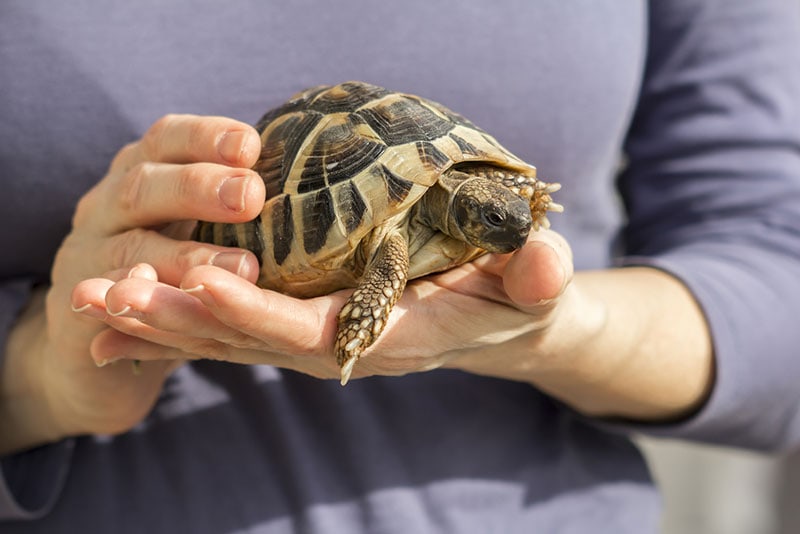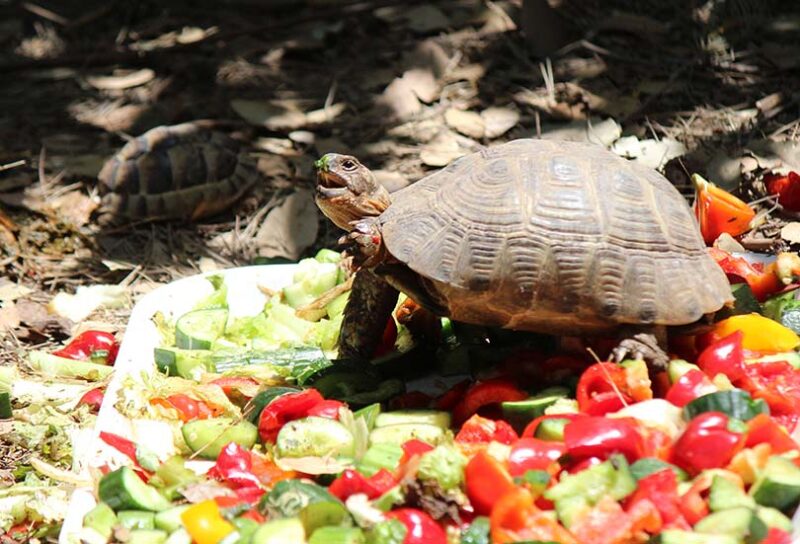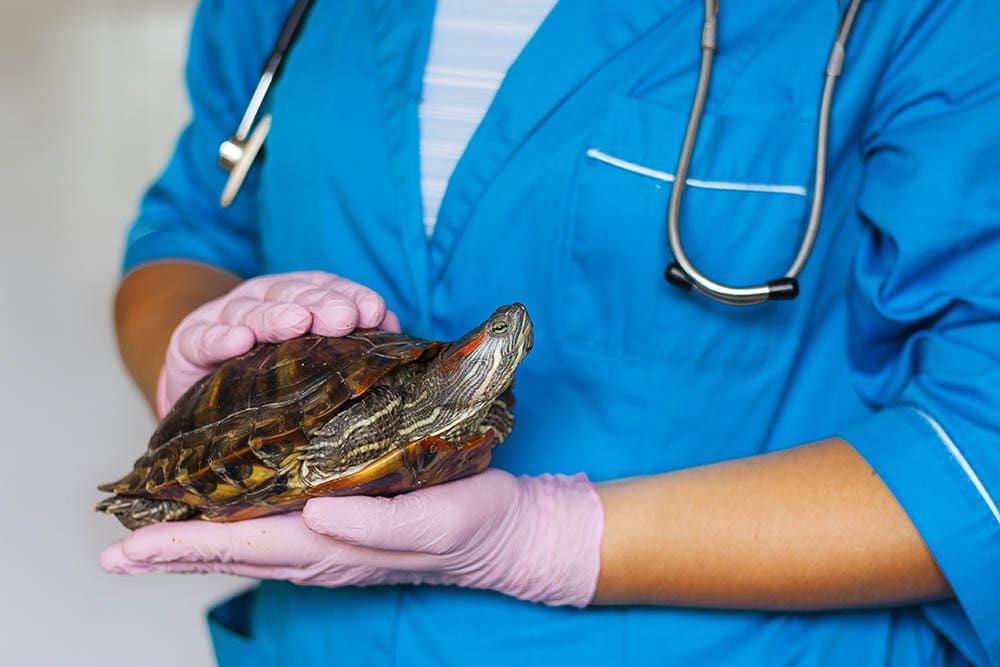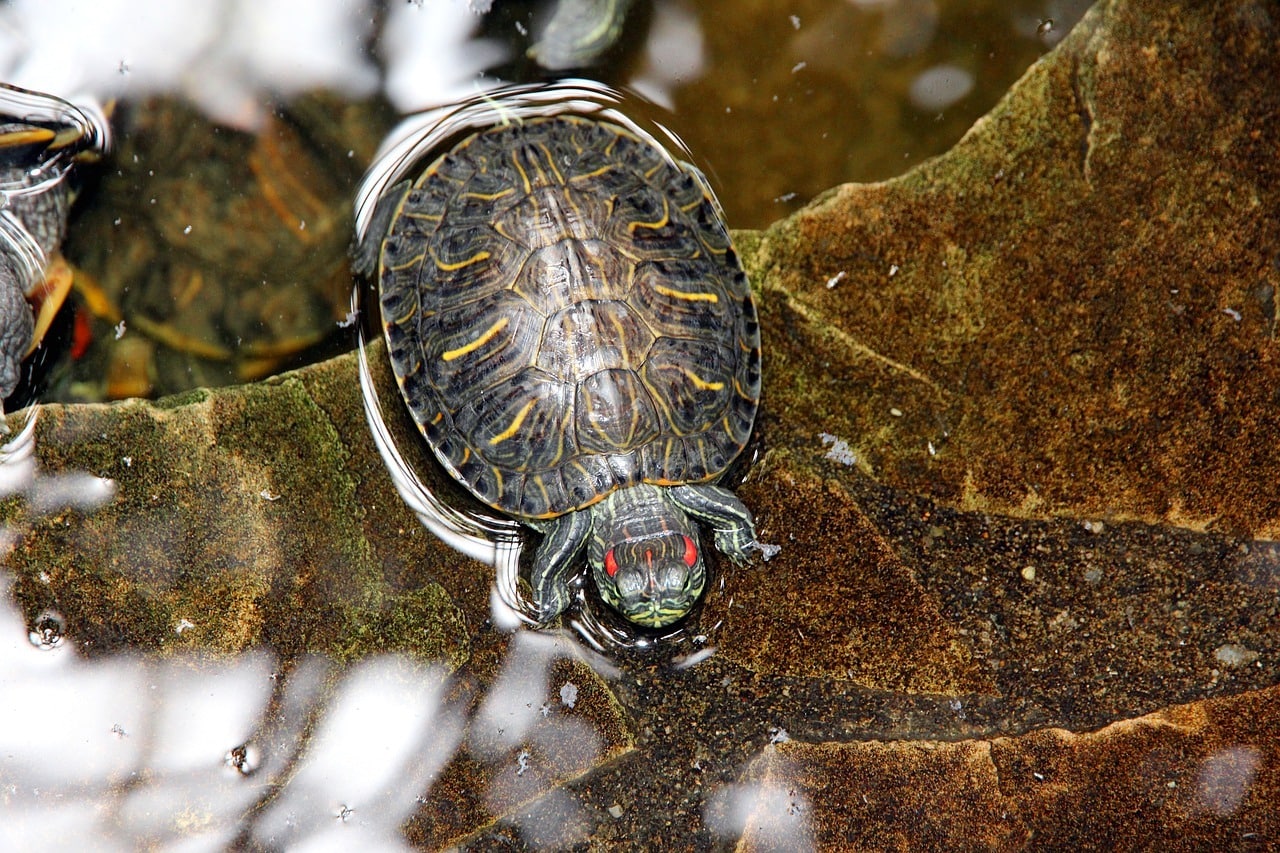
Any animal, especially the dearest ones that we keep in our homes, should never be suffering with obesity. We are responsible for their health, and ensuring they are a healthy weight is part of that responsibility. That’s also true for your long-lived shelled companion.
But how can you tell if your turtle is tubby? There are four main signs to watch out for. Let’s look at each in more detail and discuss what to do if you realize that your little reptile is getting too heavy for its own good.
The 4 Signs of an Overfed Turtle
1. Your Turtle Looks Like It Could Use the Next Size Up
Your turtle’s upper shell (carapace) and lower shell (plastron) are made up of bony structures that meet on each side of its body. This creates a rigid skeletal box that is an integral part of the turtle’s body. In other words, it cannot change its shell at will.
This is normally not a problem, but if your turtle gains too much weight, its shell home becomes too small to fit its limbs comfortably. Therefore, if you notice folds of skin developing around its legs, especially when it tucks its legs into its shell, your turtle is likely getting too fat.

2. Your Turtle Gets Locked Out of Its Shell
If your turtle’s legs and neck have so much fat that it can no longer retract into its shell, that’s a telltale sign that your turtle is getting dangerously overweight.
3. Your Turtle Can Barely Move
Observing how they move is another way to tell if your turtle is overeating. Indeed, the motility of your turtle will be affected by its extra pounds. Very obese turtles may not even be able to support their weight on land, and even in the water, the fluidity of their movements can also be severely hampered.

4. Your Turtle’s Shell Has Small Pyramid-Shaped Humps
Pyramiding is the excessive upward growth of the scutes on a turtle’s shell. This condition is relatively easy to spot: Just look for small pyramid-shaped bumps on the shell.
That said, be careful not to jump to conclusions. This disorder is common to several species and is not always caused by overfeeding. Other causes include:
In any case, if you notice shell deformations on your turtle, it is imperative to consult a veterinarian who specializes in reptiles.
Carapace deformities can interfere with normal lung function, cause pain in the legs and arthritis, and even lead to total paralysis. In the most severe cases, pyramiding can lead to the premature death of your turtle.
How Do Pet Turtles Get Fat?
Pet turtles can get fat the same way as any other living being: by eating too much and moving too little. If a turtle is kept in a tiny aquarium without enough room to swim and move around, and they are fed an excessive number of high-calorie foods and their intake is not limited, they can become overweight.

What Happens When Turtles Are Overfed?
Obesity and hepatic lipidosis (fatty liver disease) are two conditions linked to overfed pet turtles. Obesity can dramatically shorten your turtle’s lifespan due to the strain on the body, increased risk of related health issues, and decreased overall vitality.
Excessive fat deposits can put pressure on the internal organs, including the heart, liver, and kidneys. Over time, this can lead to organ dysfunction, reduced efficiency, and potential organ failure.
This is why you must start carefully monitoring your beloved turtle’s daily intake!
How to Prevent Obesity in Your Turtle
Fortunately, there are many ways to prevent your turtle from getting fat at the expense of its health:
Conclusion
Turtles are not immune to problems related to overfeeding. However, their small size means that the consequences of being overweight can be disastrous. That said, the signs that a turtle is getting too fat are quite obvious once you know what you are looking for, and any responsible owner should be able to quickly identify if their pet needs a change in diet and more exercise.
The good news is that keeping a pet turtle at a healthy weight isn’t overly difficult: A balanced diet and an enclosure that keeps them entertained and occupied should do the trick.
Featured Image Credit: Dimitris Vetsikas, Pixabay









